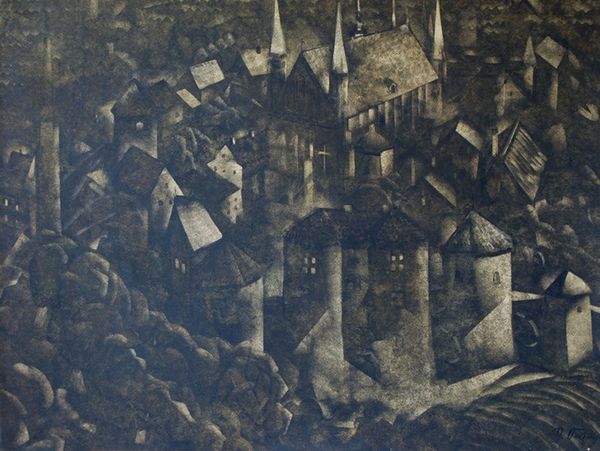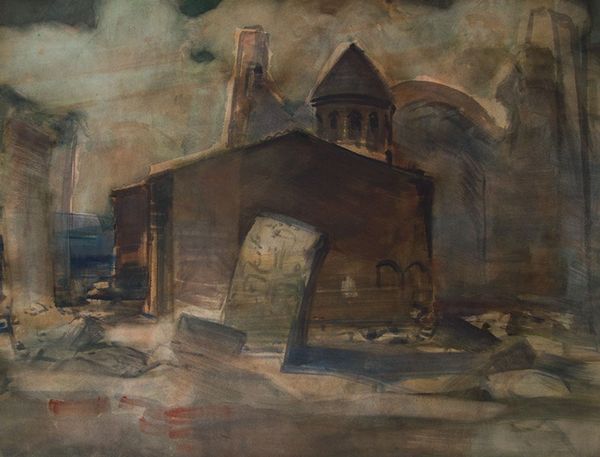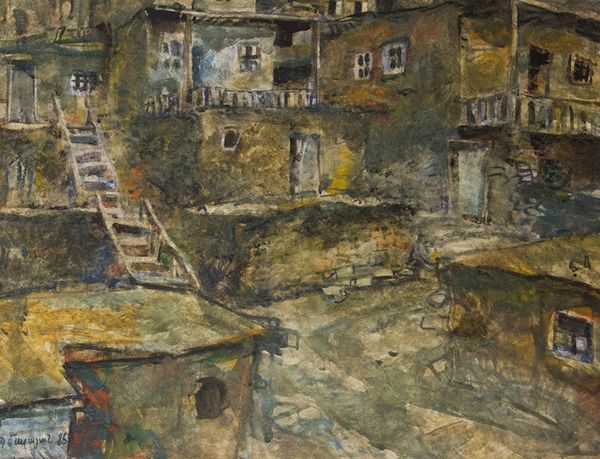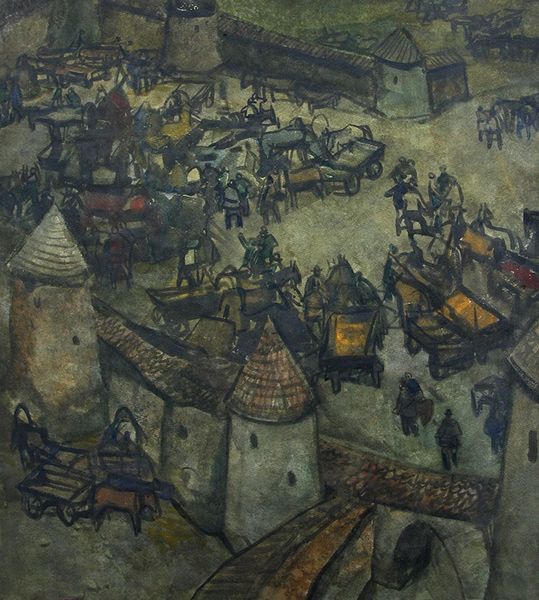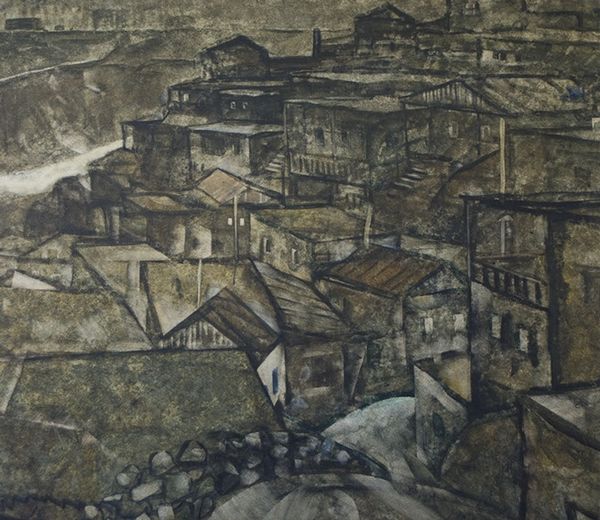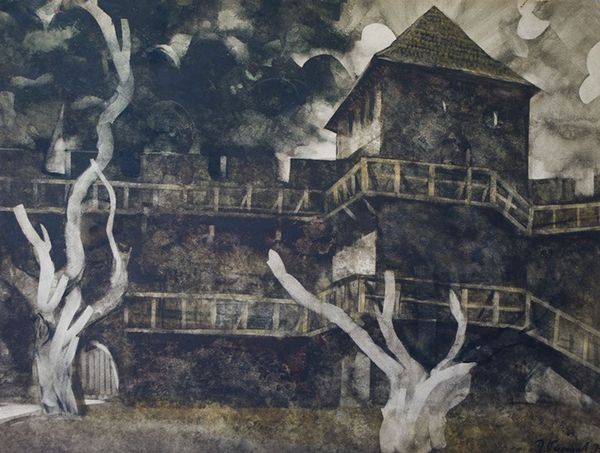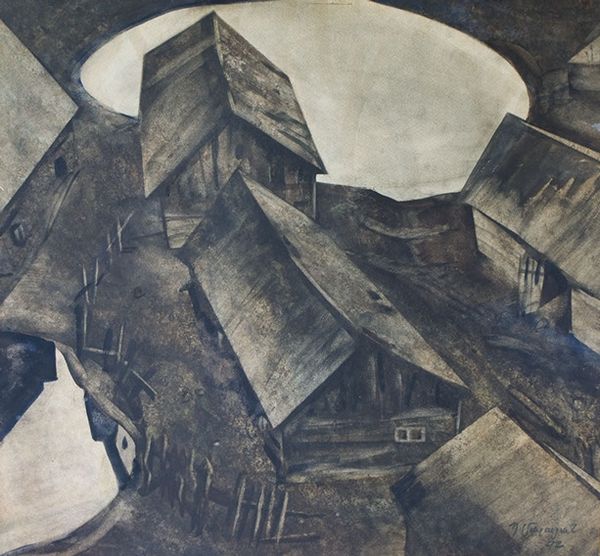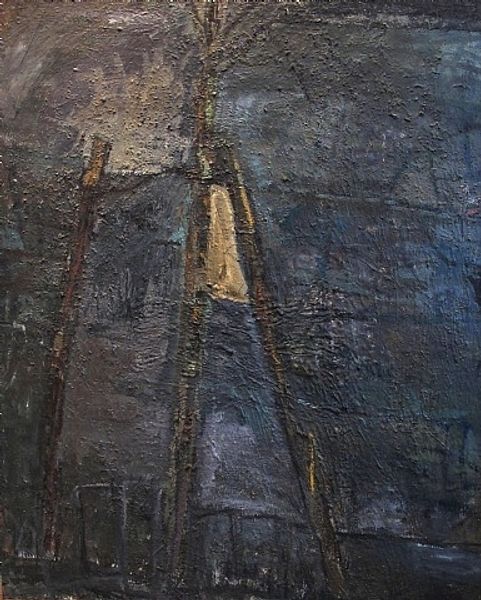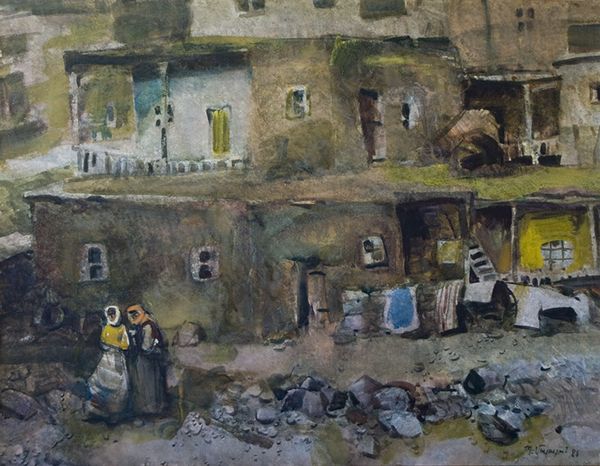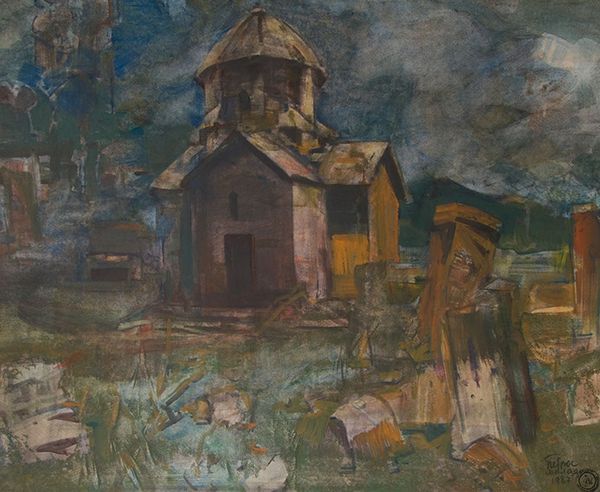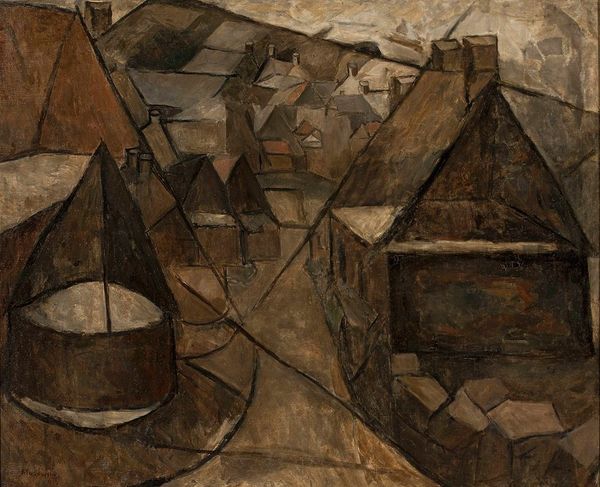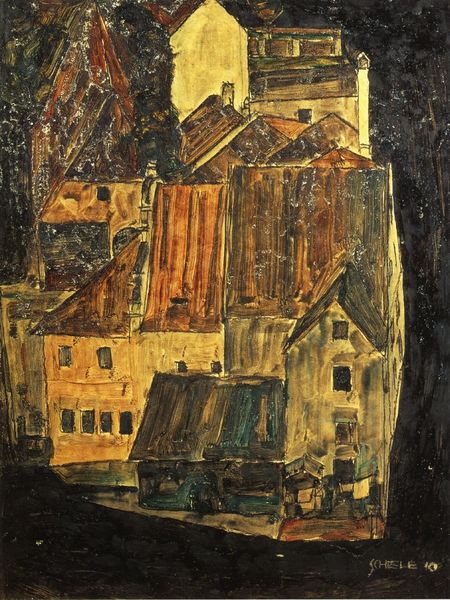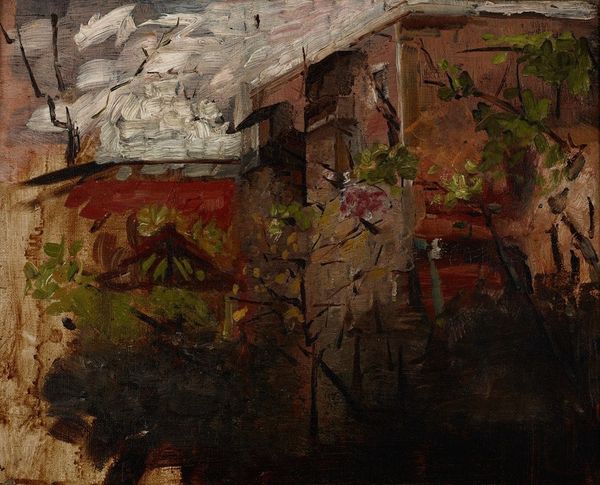
#
abstract expressionism
#
abstract painting
#
impressionist painting style
#
impressionist landscape
#
possibly oil pastel
#
oil painting
#
fluid art
#
underpainting
#
painting painterly
#
watercolor
Copyright: Petros Malayan,Fair Use
Curator: Looking at "Ashtarak, Karmravor," painted by Petros Malayan in 1973, I'm struck by its almost monochromatic palette. What’s your initial take? Editor: It evokes a powerful sense of history, of ancient stones worn by time. It's brooding, almost gothic, in its atmosphere. Curator: Right, let's dive into that. Malayan, working within a Soviet Armenian context, presents us with this... almost ghostly image. The Karmravor Church, central to the composition, becomes more than just a building. It’s a symbol, a touchstone to the past. It was likely made with oil or oil pastels. Can you detect any signs? Editor: You can certainly see a buildup of pigment, giving the surface texture a palpable quality. But more than that, think about how the church, especially religious architecture, would have been received and how the socio-political climate would have allowed artists like Malayan to find spaces and patronage. It's a balancing act. How does it reflect within cultural and political currents? Curator: Absolutely. The act of depicting it, immortalizing it on canvas, is inherently political. This relates back to the underpainting technique and impressionist style - it's there but blurred, never defined, to maintain some abstractness. By focusing on a tangible historical element, he navigates those complex Soviet controls, almost using the past to comment on the present. Editor: The very choice of material is, then, significant. These readily accessible, mass-produced materials connect Malayan's work to a wider consumer culture, and so we circle back to the relationship between material culture, national identity, and the subtle forms of resistance art can embody. It seems he found an interesting loophole. Curator: The scale and location of the painting’s eventual display certainly dictated its impact too. Would it have found its way into public collections or was it destined for more private circles? How that affected its social function is an essential point of enquiry. Editor: Indeed. It’s interesting to consider who his target audience was at that time. A lot can be gleaned from such reflection. Curator: Agreed. Exploring this piece helps to unveil complex strategies adopted by artists under specific regimes and I think this really sums up why historical context really matters to such analyses. Editor: And by grounding our understanding in material conditions and techniques, we can unpack a wealth of untold cultural context.
Comments
No comments
Be the first to comment and join the conversation on the ultimate creative platform.
